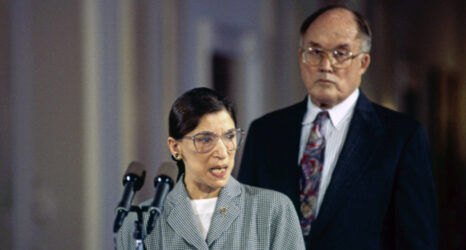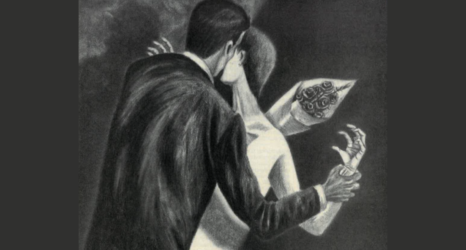The Washington Post has been in hot water over the past few weeks for publishing two controversial opinion pieces.
The first, “College become the victim of progressivism,” by conservative Post columnist George F. Will, lambasted colleges for submitting to the government’s stance on campus sexual assault. He debates the accuracy of the commonly cited statistic that 1 in 5 college women have been sexually assaulted and derides trigger warnings as censorship, all of which contribute to what he sees as the increased progressivism of colleges nationwide. Published June 6, it was quickly met with a firestorm on Twitter, and at least one newspaper that syndicates Will’s writing each week, the St. Louis Post-Dispatch, has dropped him and apologized for running the column.
The second was an op-ed authored by two professors, W. Bradford Wilcox and Robin Fretwell Wilson. Though initially published under a different headline (more on that later), its current title is “One way to end violence against women? Married dads.” The authors, in response to the recent shootings at UC Santa Barbara, argue that “married women are notably safer than their unmarried peers, and girls raised in a home with their married father are markedly less likely to be abused or assaulted than children living without their own father.”
ThinkProgress has a roundup of the various organizations that have spoken out against these two pieces. Notably, NOW has called for The Washington Post to drop George Will’s column (the Post’s editorial page editor said he “welcomed” Will’s contribution and felt it was “well within bounds of legitimate debate,” however) and four Democratic senators admonished Will in an open letter.
I was recently promoted to opinions editor of my university’s student newspaper. Since I got the job, I’ve learned a few basic dos and don’ts of opinion writing, taught to me by my predecessors and the wonderful editors-in-chief with whom I’ve worked. Despite my inexperience, I’d like to offer a back-to-basics perspective on writing editorials to these embroiled writers at The Washington Post. We all could use a refresher once in a while.
1. It’s great to reference data in your writing. When you include the findings of scientific research in your column, it makes your argument much stronger because you have indisputable evidence supporting your point. It’s extremely important, however, to interpret your data correctly. Mona Chalabi, a writer at FiveThirtyEight, dug into the data used by Wilcox and Wilson and found that they largely warped it to support their claims.
For starters, their examination of marriage as a central variable didn’t come with an analysis of other possible confounding variables, including education, income and race, all of which “could also partly explain trends in intimate violence,” Chalabi writes. They also neglected to take into account the fact that women are generally getting married later in life, “which may at least partly explain why the rates of intimate partner violence are lower for married women.” Chalabi even managed to get in touch with Shannon Catalano, a statistician at the Bureau of Justice Statistics and the original author of the study that Wilcox and Wilson reference. Catalano is adamant that the authors took her data out of context and didn’t sufficiently explain the charts they borrowed from her work. It’s clear Wilcox and Wilson went into their study with a judgment already made about the topic, and warped Catalano’s work to fit their ideological needs.
As soon as Chalabi’s analysis was published and picked up by other news sources, the Wilcox/Wilson article lost a good deal of its credibility. In an information environment in which outlandish claims can be easily fact-checked by other news organizations, it’s essential to base your claims on air-tight data interpretation.
2. Even the most respected news organizations fall prey to clickbait. It’s a tale as old as time, reaching back to the days of yellow journalism. While some publicly eschew it as indefensible, competition for clicks is essential in this revenue-hungry journalistic environment. As Steve Hind writes at The Guardian,
We live in a media environment where online eyeballs, in sufficient quantities, are still more valuable than paid subscribers. In a competitive environment where the number of media sources has proliferated, outlets have to do everything they can to get readers. It’s not enough to announce the news—media outlets need to get the clicks, or from the perspective of advertisers they’ve done nothing.
Both Post columns were clear examples of clickbait. While George Will’s column didn’t have a particularly fiery headline, he’s a well-known conservative columnist writing about campus sexual assault—that’s sure to draw eyeballs. As if that wasn’t enough, in the very first paragraph, he (now infamously) refers to the “coveted status that confers privilege” on rape victims, and by the second graf he references “the supposed campus epidemic of rape, a.k.a. ‘sexual assault’”—the scare quotes are his.
As for the rocky publishing history of Wilcox and Wilson’s column, Salon tells the story:
While it was first announced as, “One way to end violence against women? Stop taking lovers and get married,” with the subhed, “The data show that #yesallwomen would be safer hitched to their baby daddies,” the piece soon became, “One way to end violence against women? Married dads,” with the subhed, “The data show that #yesallwomen would be safer with fewer boyfriends around their kids.”
Their first headline–and, to a lesser extent, the second–is a blatant example of clickbait. It was meant to outrage feminists, mothers, anti-domestic violence activists, men, women and anyone else with a pulse. The initial subhed’s reference to baby daddies is patronizing, the inclusion of #yesallwomen minimizes a recent important feminist moment. And these problems weren’t mitigated by the new headline.
Clickbait used in this manner is inexcusable. Its purpose, in both cases, is to draw unsuspecting readers to an offensive column. It earns the website clicks, and thus revenue dollars, even from those who linger on the article for a few seconds before they get disgusted with the content and click away.
3. Every opinion needs to take into account the context in which it’s being said. As an opinions editor, I’m the last person who would condone the silencing of someone’s opinion. At my university’s student paper, our editorials have actually swayed administrators to change controversial policies. But not every single opinion is perfect.
Just two weeks after Elliot Rodger went on a shooting spree that specifically targeted women, Wilcox and Wilson published their column prescribing married dads as a “way to end violence against women.” And in a year that has seen a flood of coverage of campus sexual assault, George Will called colleges cowardly for taking steps to rectify the problem, and he denied (without evidence) the statistic that 20 percent of college women are sexual assault survivors.
This insensitivity to context is what turned the Post columns from simple opinions to a slap in women’s faces. In neither column did the authors acknowledge the uphill battle against sexual assault or domestic violence. Neither made any allowance for the struggles of women who have lived these traumatic experiences.
Instead, both columns made far-reaching social prescriptions. Will dismissed trigger warnings as “soft censorship” meant “to swaddle students in a ‘safe,’ ‘supportive,’ ‘unthreatening’ environment, intellectual comfort for the intellectually dormant,” without any reference to the voices of those who have been triggered. Wilcox and Wilson encouraged women to marry their “baby daddies” to avoid violence in the home–a blatant example of victim-blaming, and a prescription that ignores many nuances of women’s lives and relationships.
I know I have plenty yet to learn about the craft of writing opinions. But the few important tips I have learned already–to interpret data correctly, to avoid inflammatory clickbait and to surround my opinions in a larger context–would do well to be reviewed by these Post contributors.
Top photo used under the Wikimedia Commons license. Middle photo courtesy FiveThirtyEight.





